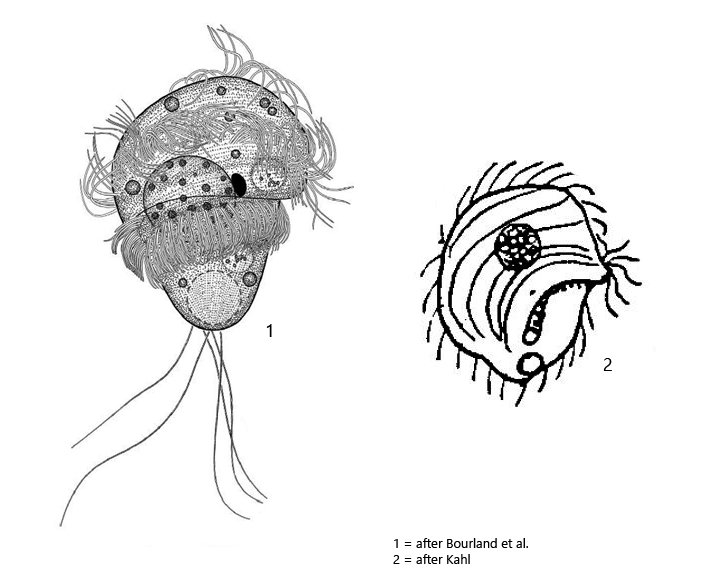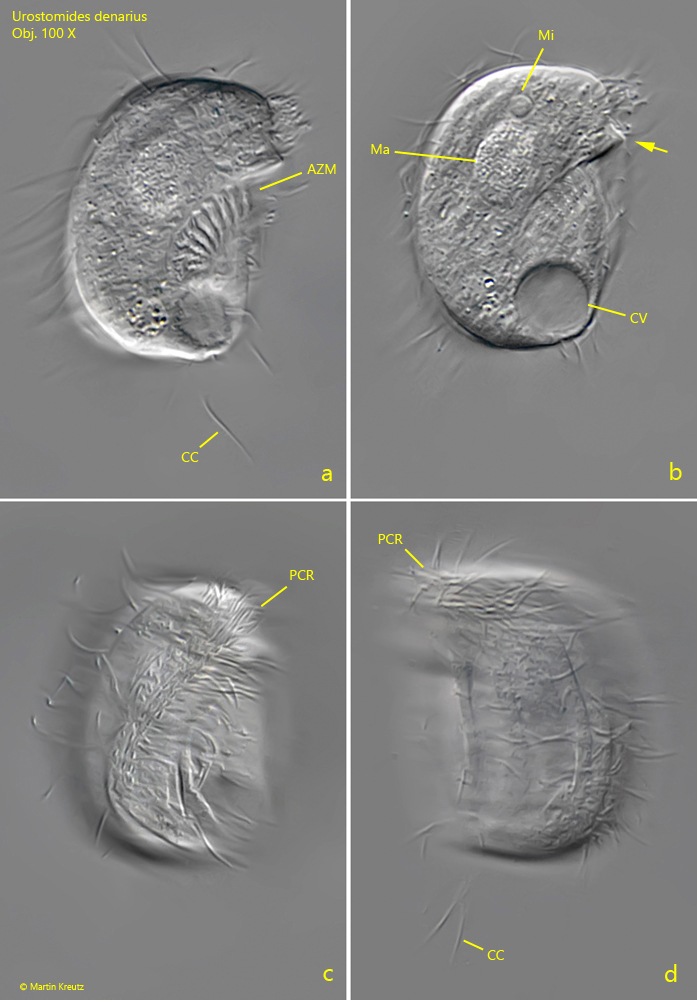Urostomides denarius
(Kahl, 1927) Bourland et al., 2017
Most likely ID: n.a.
Synonym: Metopus denarius, Metopus bacillatus var. denarius
Sampling location: Simmelried
Phylogenetic tree: Urostomides denarius
Diagnosis:
- body broadly oval, posterior end narrowed
- preoral dome prominent with nasal bulge at left margin
- length 35–57 µm
- adoral zone encircles 2/3 of the body, ventrally it bends posteriorly
- perizonal stripe longer than adoral zone
- macronucleus spherical or ellipsoidal
- micronucleus spherical
- contractile vacuole terminal
- some elongated caudal cilia

Urostomides denarius was first described in 1927 by Kahl as Metopus bacillatus var. denarius and later elevated by him to the species Metopus denarius. In 2017 the species was redescribed by Bourland et al. who transferred the species to the genus Urostomides.
I have only been able to find a single specimen of Urostomides denarius in November 2008 in the Simmelried. After that I have not found any other specimen, not even in my other sampling sites. My specimen is very similar in body shape to the drawing of Kahl (s. drawings above). At the left margin the preoral dome forms a nasal bulge (s. fig. 1 b), which is very characteristic, but not mentioned by Bourland et al. Possibly this nasal bulge is variable. Otherwise the body shape of my specimen was stocky and almost rectangular, while the species of Bourland et al. is drawn with a distinctly tapered posterior end (s. drawing above). All other characteristics of my specimen agree with the description of Kahl and the redescription by Bourland et al.

Fig. 1 a-d: Urostomides denarius. L = 51 µm. A a freely swimming specimen from ventral (a, b, c) and dorsal (d, focused from the ventral side). Note the nasal bulge at the left marging of the preoral dome (arrow) and the elongated caudal cilia (CC). AZM = adoral zone of membranelles, CV = contractile vacuole, Ma = macronucleus, Mi = micronucleus, PCR = perizonal cilia row. Obj. 100 X.